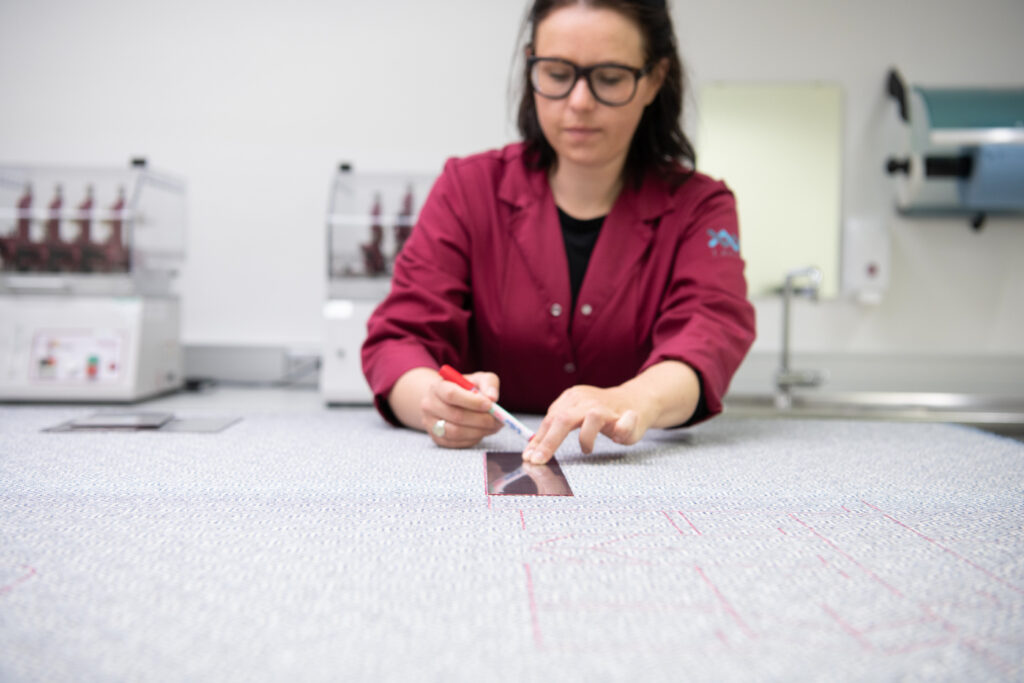3D Printed Textiles: The Future of Fabric Innovation?
The world of textile design is constantly evolving, and one of the most exciting developments in recent years is the use of 3D printing technology. With the ability to create complex structures, customised designs, and reduce waste, 3D printed textiles are changing the way we think about fabrics, whether from interior furnishing fabrics to fashion fabrics.
In this article, we'll delve into the potential of 3D printing technology in textile design and production.
Complex Structures and Customisation
Traditional textile production methods can limit the complexity of designs that can be created, but 3D printing technology opens a world of possibilities.
Designers can now create intricate, three-dimensional structures that were once impossible to achieve. In addition to creating complex structures, 3D textile printing also opens a new field of opportunity when it comes to customisations in furnishing fabrics and the unique demands of various kinds of interior spaces.
From intricate patterns and textures to personalised colour schemes, 3D printing technology allows for an unparalleled level of creativity in the design and production of furnishing fabrics.
As 3D printing technology continues to advance, we can expect to see an even greater range of possibilities for customising furnishing fabrics, transforming the way consumers and manufacturers alike think about interior design and home decor.
Here's a handy guide to help you understand the process of creating 3D printed textiles: Step-by-Step Guide to Creating 3D Printed Furnishing Fabrics

Reducing Waste and Environmental Impact with 3D Printed Textiles Tech
Currently, the textile industry consumes a large amount of water, mostly because of cotton farming. Some believe 3D printing is the way to fix this.
Sidenote: As yet there are no ‘magic bullet’ solutions to the climate change issues that are forecast to increase. At FibreGuard and in our wider group, we focus on sustainability practicalities first. Explore our commitment to sustainability in the textiles industry.
Back to the main article:
One of the most significant benefits of 3D printing technology in textile design is its potential to reduce waste. Traditionally, textile manufacturing processes can generate a significant amount of waste, from excess fabric to water and energy consumption.
3D printing uses only the exact amount of material needed to create a part or product. The additive nature—in which parts are made layer-by-layer—means that no more material is used than necessary when compared with other manufacturing processes, such as traditional injection moulding.
It generates less wasted material than other forms of fabrication, such as milling or laser cutting.
Exciting examples of 3D printing textiles
One of the most recent developments in the field of 3D printed fabrics comes from a group of researchers at MIT.
They addressed one traditional challenge—the stiffness and inflexibility that has limited applications for early designers—by adjusting existing technology, creating new materials.
To create a fabric with the desired texture, researchers focused on structure.
They designed their creation to resemble protein collagen, a strong and flexible molecule made of interwoven strands.
They believe that their fabric could have many uses in the medical field—as well as in textiles, since 3D printing enables the creation of limitless shapes and sizes. It can function as a brace or surgical mesh; even coronary stents (used during heart surgery).
Another example that bridges the divide between 3D printing tech, textile design and energy harvesting (yes, you read that correctly) comes from Chinese researchers who have developed textile fibres combined with electronic threads that transform movement into energy.
Learn more at Asian Scientist Magazine and their feature Weaving Electronic Fibers Into Fabric.
Known as 'e-textiles', they're designed to harvest electricity generated by the wearer, storing it within the fabrics they're wearing.
The Future of 3D Printed Textiles
The future of fabric innovation is bright, and 3D printing technology is at the forefront of these exciting changes.
Now that you've gained a deeper understanding of the world of 3D printed fabrics, we encourage you to continue exploring the fascinating world of textiles.
Be sure to check out the rest of our Fabrics Academy articles for more in-depth knowledge, tips, and inspiration to fuel your passion for textiles.
Happy exploring!